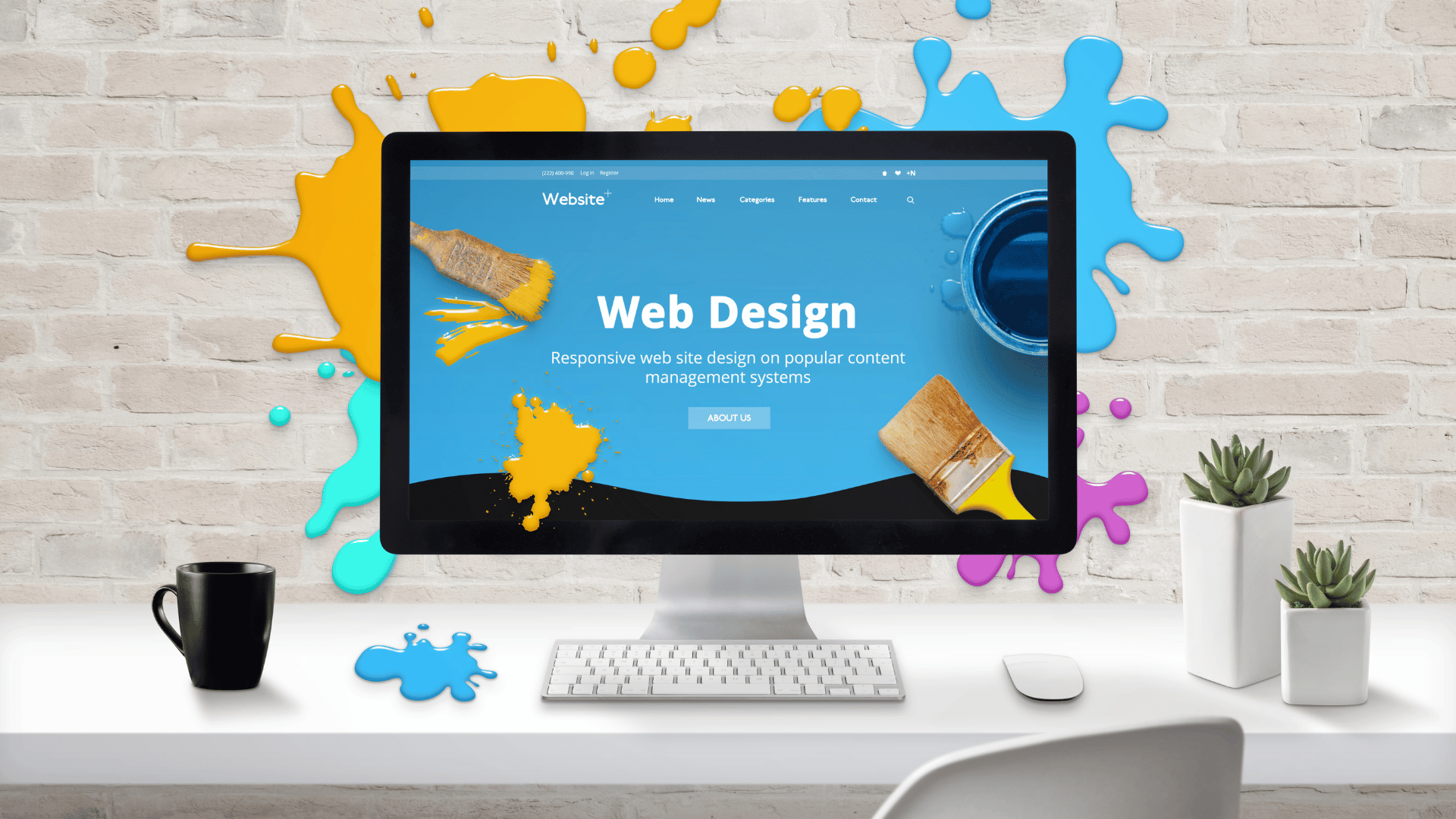The future of website innovation: what every web design company needs to know
The Relevance of User Experience in Effective Web Design Techniques
User experience (UX) offers as a foundation in reliable web design approaches. It shapes exactly how users engage with a site, influencing their satisfaction and likelihood of returning. A properly designed UX can boost involvement via instinctive navigation and responsive designs. Nevertheless, overlooking these elements may lead to aggravation and boosted bounce rates. Recognizing the details of UX is essential for developers aiming to develop compelling electronic experiences that resonate with diverse audiences. What elements really drive successful user engagement?
Recognizing User Experience and Its Impact on Layout
User experience (UX) is commonly perceived as a simple facet of web design, it essentially shapes exactly how customers connect with a site. UX includes all facets of the user's interaction, including use, accessibility, and overall fulfillment. A favorable UX cultivates involvement, motivating users to discover the site and return in the future. On the other hand, an unfavorable experience can result in frustration, causing high bounce prices and lost possibilities for conversion.
Design components like layout, content, and navigation company play crucial functions fit this experience. Effective UX style expects user demands and choices, making certain that info is quickly obtainable and aesthetically enticing. Furthermore, comprehending user habits through analytics can give beneficial understandings, educating style decisions that boost usability. Eventually, a comprehensive understanding of UX permits designers to develop websites that not just draw in users yet additionally promote meaningful interactions that line up with organization goals and user expectations.
Trick Concepts of Efficient User Experience
Efficient user experience hinges on several key principles that improve website capability and involvement. Instinctive navigation layout, receptive format fundamentals, and the significance of aesthetic hierarchy are important components that contribute to a smooth communication in between users and web content. Understanding these principles allows developers to develop even more user-friendly and accessible electronic environments.
User-friendly Navigation Design
When individuals run into a website, intuitive navigating style acts as an essential entrance to their overall experience. Reliable navigating permits individuals to easily locate the information they seek, boosting their interaction with the website. Key principles include clear labeling, sensible company, and regular positioning of navigation components. Tags must be straightforward, allowing customers to predict the content they will discover. A well-structured pecking order helps customers recognize the relationship in between different areas, guiding them via the web site seamlessly. Furthermore, responsive food selections and quickly available web links add to a liquid experience throughout gadgets. By focusing on instinctive navigating, designers can significantly decrease user irritation and boost engagement, ultimately promoting a positive assumption of the web site and its web content.
Receptive Layout Basics
A well-structured navigation system naturally causes the requirement for a receptive layout, which is necessary in today's diverse electronic landscape. A receptive design assurances that websites function seamlessly across different devices, including tablet computers, smartphones, and desktops. This adaptability boosts user experience by permitting content to be quickly accessible and aesthetically systematic, no matter display dimension. Trick principles of responsive layout consist of fluid grids, adaptable photos, and media questions, which help with excellent watching. Furthermore, focusing on touch-friendly components enhances interaction on mobile phones. By applying a responsive layout, designers can fit customers' demands, reduce bounce prices, and boost engagement. Ultimately, a well-executed receptive style fosters a positive user experience, motivating visitors to check out the website additionally.
Visual Pecking Order Value
Aesthetic power structure plays an essential duty in leading individuals with a site, guaranteeing that crucial information captures their interest first. By purposefully utilizing dimension, shade, spacing, and comparison, developers can produce a clear path for individuals to comply with. Larger aspects often draw the eye, suggesting their value, while contrasting shades can highlight phone call to activity. Furthermore, regular positioning and group of relevant content boost comprehension, making navigating intuitive. Reliable use of visual hierarchy not only improves use yet likewise supports the total aesthetic of the website, promoting a favorable user experience. When users can conveniently recognize one of the most essential info, they are a lot more most likely to engage with the web content, causing boosted complete satisfaction and interaction with the internet site.
The Function of Functionality in Web Design
Functionality plays a crucial duty in web design, particularly with navigation simpleness and adherence to ease of access requirements. Effective navigating improves user satisfaction by enabling site visitors to discover details promptly and intuitively. At the same time, meeting ease of access standards guarantees that all users, regardless of their capacities, can effectively interact with the web site.
Navigating Simpleness
Simpleness in navigating stands as a foundation of effective web design, considerably influencing user experience. A structured navigation system permits users to find info rapidly and intuitively, reducing stress and improving fulfillment. Clear labeling and logical framework are vital aspects, guiding users effortlessly with the web site. Repetitive web links or extremely intricate food selections can disorient users, leading to enhanced bounce prices. In addition, mobile responsiveness should be taken into consideration, guaranteeing navigation remains uncomplicated across devices. Decreasing and focusing on important web anchor pages clutter further supports user involvement. Efficient navigation not only cultivates a favorable experience however also motivates customers to discover the website better, ultimately resulting in higher conversion prices. In this respect, navigating simplicity functions as a critical element in the total efficiency of web design techniques.
Availability Specifications
User involvement is significantly improved when sites comply with access standards, making certain that all customers, no matter of their capabilities, can navigate and communicate effectively. Conformity with these standards not only expands the target market however likewise boosts overall user fulfillment. Obtainable layout incorporates functions such as message options for pictures, key-board navigating, and adequate shade comparison, which assist in usage by people with specials needs. Additionally, executing these requirements can favorably affect seo (SEO) by enhancing site framework and quality. As web design evolves, prioritizing access ends up being essential in cultivating a comprehensive digital environment. By embracing these requirements, designers contribute to a more equitable internet, inevitably driving user loyalty and interaction.
Value of Responsive Style for User Interaction
As customers increasingly access web sites via a variety of devices, the importance of responsive design becomes critical for engaging customers successfully. Responsive layout assurances that an internet site adjusts flawlessly to different display dimensions, offering an excellent viewing experience no matter the device utilized. This flexibility boosts user interaction by helping with much easier navigating and interaction with content.
When individuals experience an internet site that is receptive, they are most likely to remain longer, explore even more, and return in the future. A properly designed responsive layout reduces the disappointment commonly connected with scrolling and zooming on smaller sized screens, consequently reducing bounce rates. Furthermore, responsive design can favorably impact internet search engine positions, as internet search engine focus on mobile-friendly internet sites. In today's electronic landscape, where mobile use remains to climb, executing receptive design is not just beneficial, however essential for keeping user interaction and guaranteeing a positive experience throughout all gadgets.
Enhancing Load Times for Better User Contentment

To boost lots times, web developers need to focus on enhancing photos, leveraging browser caching, and reducing HTTP requests. Furthermore, employing Material Delivery Networks (CDNs) can speed up content distribution by dispersing it throughout numerous geographical areas. Improving code, such as pressing CSS and JavaScript documents, better adds to quicker packing rates.
Ultimately, a commitment to improving tons times not only improves user complete satisfaction but likewise reinforces brand loyalty and enhances the chance of repeat sees. A swift, smooth experience is necessary for preserving individuals and promoting favorable communications.
The Influence of Visual Power Structure on User Interaction
Visual power structure functions as a vital element in leading user interaction on a site. By organizing content in a manner that focuses on information aesthetically, developers can influence just how customers involve and browse with a website. This power structure is developed through various style techniques, consisting of size, contrast, spacing, and shade. Larger typefaces or vibrant colors attract interest to critical aspects, such as phone calls to activity or headings, while subdued colors and smaller font styles can show secondary details.
Effective visual power structure helps users quickly recognize what is essential, lowering cognitive lots and improving use. It enables user-friendly navigation, making it easier for users to locate what they need without stress. As users engage with a website, a well-structured visual pecking order fosters an extra gratifying experience, eventually resulting in greater engagement and conversion prices. Developers must focus on these concepts to create a reliable and user-centered web atmosphere.
Measuring User Experience: Devices and Methods

Often Asked Questions
How Can I Boost My Internet site's User Experience on a Budget plan?
To improve a web site's user experience on a budget plan, one can enhance page load speed, simplify navigation, carry out responsive style, enhance material clearness, and collect user responses for continual improvements, ensuring a rewarding visitor experience.
What Are Typical User Experience Errors to Prevent in Web Design?
Typical user experience mistakes in web design include messy formats, poor navigating, sluggish loading times, absence of mobile responsiveness, overlooking access, inconsistent branding, and failing to focus on user responses - Web Design Agency. Each can substantially impede overall site efficiency
Just how Typically Should I Update My Site for Better User Experience?
Internet sites ought to be updated on a regular basis, ideally every couple of months, to preserve optimal user experience. Frequent updates assist address usability issues, freshen content, and adjust to altering user requirements, guaranteeing the website continues to be interesting and appropriate.

Can User Experience Effect Search Engine Optimization Rankings on My Internet site?
User experience can substantially influence search engine optimization positions, as search engines focus on websites that use seamless navigation, check my site fast loading times, and engaging content. A positive user experience can result in reduced bounce rates and higher search presence.
What Role Does Ease Of Access Play in User Experience Layout?
Availability plays a vital role in user experience layout by ensuring that all individuals, no matter of capabilities, can navigate and connect with a site successfully. This inclusivity boosts total contentment and interaction among varied individuals.
User experience (UX) is commonly viewed as a simple facet of web style, it basically forms just how users engage with an internet site. User engagement is substantially boosted when websites adhere to availability criteria, ensuring that all individuals, regardless of their capabilities, can browse and connect properly. Gauging user experience (UX) is necessary for understanding how properly an internet site fulfills the demands of its customers. Additionally, usability screening, where genuine individuals navigate the site while observers note troubles, provides straight comments on user experience. Usual user experience errors in internet design include messy layouts, poor navigating, sluggish packing times, lack of mobile responsiveness, disregarding accessibility, irregular branding, and failing to prioritize user comments.